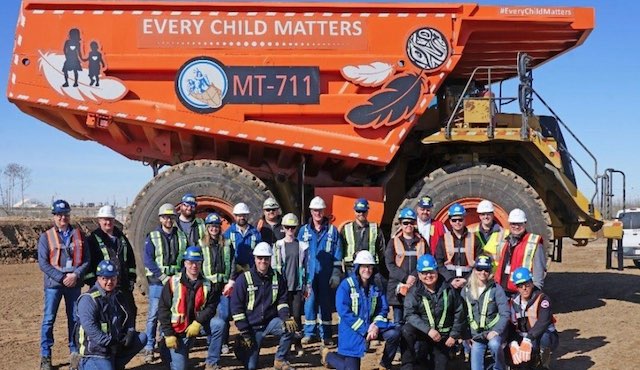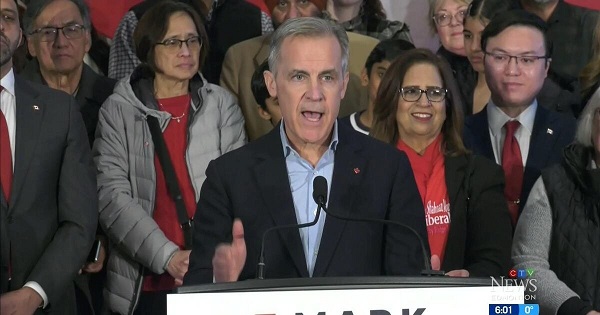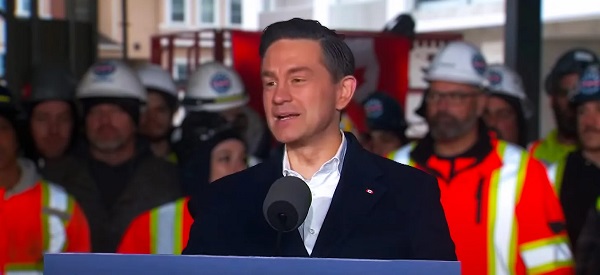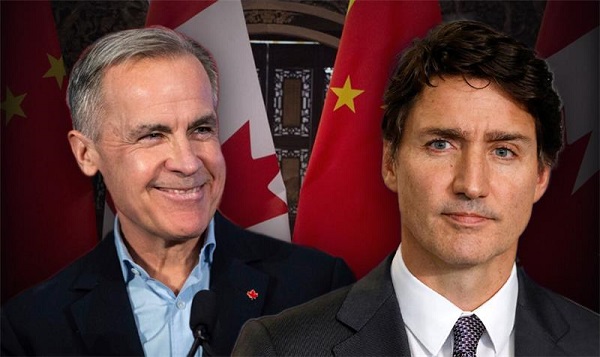Alberta
“Ontario Can’t do it Alone” – Fairness Alberta Expands with Eastern Canada Campaign

It has been just over four months since the launch of Fairness Alberta, a non-partisan Proudly Canadian, Fiercely Albertan organization, in May 2020. Fairness Alberta promotes education and discussion to combat biased government policies and regulations that restrict Alberta’s economic growth and prosperity. By highlighting Alberta’s $324 billion net contribution to the Canadian economy from 2000 to 2019, FA’s mandate is to “inform Canadians about the magnitude of the contributions Albertans make to Canada, while educating Canadian’s about the damaging fiscal, trade, energy, procurement, and infrastructure policies that chronically undermine Alberta’s – and Canada’s – potential.”

Dr. Bill Bewick, Director of Fairness Alberta
The public response to the organization throughout Alberta and across Canada has been overwhelmingly positive, according to Bill Bewick, Executive Director of Fairness Alberta. “Our factual approach is agreeable,” he says, “and even people who are skeptical of Alberta demanding more from the country are willing to listen and learn.”
On September 21, Fairness Alberta expanded into eastern Canada with the launch of their Fall 2020 Campaign in Ontario. The two-part billboard series in Toronto and Ottawa is designed to illustrate just how much Albertans have helped Ontarians carry the fiscal load in the federation over the last decade. “Many people are surprised by the fiscal contributions of each province given the size difference,” says Bewick, “people assume Ontario makes the biggest contribution, but that’s just not the case.”
From 2007-2018, Ontario contributed $98 billion net and Alberta contributed $240 billion net to the country, while the remainder of the provinces have received a combined total of $370 billion.
 As all Canadian provinces face the daunting road to recovery following the destructive economic impacts of COVID-19, the dissemination of accurate information regarding the crucial role of Alberta in the nation’s recovery remains crucial. Arguably even more so since the recent Throne Speech, delivered by Governor General Julie Payette on September 23, has been widely criticized for once again ignoring the contributions and needs of Albertans in favor of new policies that will further restrict productivity in Alberta by targeting natural gas.
As all Canadian provinces face the daunting road to recovery following the destructive economic impacts of COVID-19, the dissemination of accurate information regarding the crucial role of Alberta in the nation’s recovery remains crucial. Arguably even more so since the recent Throne Speech, delivered by Governor General Julie Payette on September 23, has been widely criticized for once again ignoring the contributions and needs of Albertans in favor of new policies that will further restrict productivity in Alberta by targeting natural gas.
Premiere Jason Kenney openly criticized the Throne Speech and the clean-fuel standard, stating, “We got a litany of policies that would strangle investment and jeopardize resource jobs when we most need the industry that generates 20 percent of government revenues in Canada” (1).
Fairness Alberta has responded similarly to developments from the recent Throne Speech, arguing that Alberta’s role in national recovery cannot be overstated or ignored. “Alberta is an engine in the fragile Canadian economy,” says Bewick, “If that productivity is hindered by the new clean fuel standards, no other province will be able to pick up the slack.”
The Ontario campaign is set to continue into the month of November, paired with online advertising that draws targeted audiences to their website, and the remainder of 2020 will see an expansion into British Columbia as Fairness Alberta continues to grow and fight for a fair deal for Alberta within Canada. Bewick believes that “there are millions of fair-minded Canadians out there and showing them the importance of Alberta’s economy is critical right now to ensure the federal government works with Alberta, not against it.”
For more information on Fairness Alberta, visit fairnessalberta.ca.
For more stories, visit Todayville Calgary.
Alberta
Made in Alberta! Province makes it easier to support local products with Buy Local program

Show your Alberta side. Buy Local. |
When the going gets tough, Albertans stick together. That’s why Alberta’s government is launching a new campaign to benefit hard-working Albertans.
Global uncertainty is threatening the livelihoods of hard-working Alberta farmers, ranchers, processors and their families. The ‘Buy Local’ campaign, recently launched by Alberta’s government, encourages consumers to eat, drink and buy local to show our unified support for the province’s agriculture and food industry.
The government’s ‘Buy Local’ campaign encourages consumers to buy products from Alberta’s hard-working farmers, ranchers and food processors that produce safe, nutritious food for Albertans, Canadians and the world.
“It’s time to let these hard-working Albertans know we have their back. Now, more than ever, we need to shop local and buy made-in-Alberta products. The next time you are grocery shopping or go out for dinner or a drink with your friends or family, support local to demonstrate your Alberta pride. We are pleased tariffs don’t impact the ag industry right now and will keep advocating for our ag industry.”
Alberta’s government supports consumer choice. We are providing tools to help folks easily identify Alberta- and Canadian-made foods and products. Choosing local products keeps Albertans’ hard-earned dollars in our province. Whether it is farm-fresh vegetables, potatoes, honey, craft beer, frozen food or our world-renowned beef, Alberta has an abundance of fresh foods produced right on our doorstep.
Quick facts
- This summer, Albertans can support local at more than 150 farmers’ markets across the province and meet the folks who make, bake and grow our food.
- In March 2023, the Alberta government launched the ‘Made in Alberta’ voluntary food and beverage labelling program to support local agriculture and food sectors.
- Through direct connections with processors, the program has created the momentum to continue expanding consumer awareness about the ‘Made in Alberta’ label to help shoppers quickly identify foods and beverages produced in our province.
- Made in Alberta product catalogue website
Related information
Alberta
Province to expand services provided by Alberta Sheriffs: New policing option for municipalities

Expanding municipal police service options |
Proposed amendments would help ensure Alberta’s evolving public safety needs are met while also giving municipalities more options for local policing.
As first announced with the introduction of the Public Safety Statutes Amendment Act, 2024, Alberta’s government is considering creating a new independent agency police service to assume the police-like duties currently performed by Alberta Sheriffs. If passed, Bill 49 would lay additional groundwork for the new police service.
Proposed amendments to the Police Act recognize the unique challenges faced by different communities and seek to empower local governments to adopt strategies that effectively respond to their specific safety concerns, enhancing overall public safety across the province.
If passed, Bill 49 would specify that the new agency would be a Crown corporation with an independent board of directors to oversee its day-to-day operations. The new agency would be operationally independent from the government, consistent with all police services in Alberta. Unlike the Alberta Sheriffs, officers in the new police service would be directly employed by the police service rather than by the government.
“With this bill, we are taking the necessary steps to address the unique public safety concerns in communities across Alberta. As we work towards creating an independent agency police service, we are providing an essential component of Alberta’s police framework for years to come. Our aim is for the new agency is to ensure that Albertans are safe in their communities and receive the best possible service when they need it most.”
Additional amendments would allow municipalities to select the new agency as their local police service once it becomes fully operational and the necessary standards, capacity and frameworks are in place. Alberta’s government is committed to ensuring the new agency works collaboratively with all police services to meet the province’s evolving public safety needs and improve law enforcement response times, particularly in rural communities. While the RCMP would remain the official provincial police service, municipalities would have a new option for their local policing needs.
Once established, the agency would strengthen Alberta’s existing policing model and complement the province’s current police services, which include the RCMP, Indigenous police services and municipal police. It would help fill gaps and ensure law enforcement resources are deployed efficiently across the province.
Related information
-

 2025 Federal Election21 hours ago
2025 Federal Election21 hours agoOttawa Confirms China interfering with 2025 federal election: Beijing Seeks to Block Joe Tay’s Election
-

 Energy2 days ago
Energy2 days agoIndigenous-led Projects Hold Key To Canada’s Energy Future
-

 Energy2 days ago
Energy2 days agoMany Canadians—and many Albertans—live in energy poverty
-

 Business2 days ago
Business2 days agoCanada Urgently Needs A Watchdog For Government Waste
-

 2025 Federal Election20 hours ago
2025 Federal Election20 hours agoHow Canada’s Mainstream Media Lost the Public Trust
-

 2025 Federal Election10 hours ago
2025 Federal Election10 hours agoBREAKING: THE FEDERAL BRIEF THAT SHOULD SINK CARNEY
-

 International2 days ago
International2 days agoPope Francis has died aged 88
-

 2025 Federal Election21 hours ago
2025 Federal Election21 hours agoReal Homes vs. Modular Shoeboxes: The Housing Battle Between Poilievre and Carney




